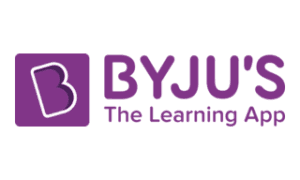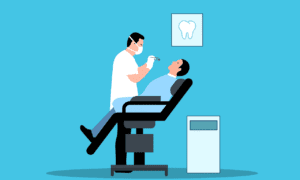The world is moving towards an era of smart living, where convenience and efficiency reign supreme. At the heart of this transformation lies the Internet of Things (IoT) and home automation. These innovations have revolutionized the way people interact with their living spaces. By connecting devices and enabling seamless communication, IoT has turned ordinary homes into smart hubs.
Understanding IoT and Home Automation
The Internet of Things (IoT) refers to a network of interconnected devices that collect, exchange, and process data. These devices include everything from smartphones to smart refrigerators, thermostats, security systems, and even wearable technology. Home automation, on the other hand, involves using IoT to automate various household functions. It provides control over lighting, climate, security, and entertainment systems, ensuring a more efficient and comfortable living environment.
The core principle behind IoT and home automation is connectivity. Smart devices communicate with each other via the internet, using protocols like Wi-Fi, Bluetooth, and Zigbee. This seamless communication allows homeowners to monitor and control their devices remotely through smartphones, tablets, or voice assistants. As a result, homes become more intuitive, responsive, and energy-efficient.
The Role of IoT in Home Automation
IoT plays a crucial role in enhancing home automation by integrating multiple devices into a unified system. Through IoT-enabled automation, homeowners can achieve the following:
Enhanced Security and Safety
Home security has significantly evolved with IoT. Smart surveillance cameras, motion sensors, and biometric locks provide real-time monitoring and instant alerts. Homeowners can remotely check security feeds, receive notifications about suspicious activities, and even control locks from anywhere. Features like facial recognition and geofencing further enhance security, ensuring only authorized individuals have access.
Energy Efficiency and Cost Savings
IoT-driven home automation optimizes energy consumption. Smart thermostats adjust temperatures based on occupancy, reducing energy waste. Automated lighting systems turn off lights when rooms are unoccupied. Additionally, smart plugs and appliances monitor energy usage, helping homeowners make informed decisions about reducing electricity consumption. These features not only lower utility bills but also contribute to environmental sustainability.
Seamless Entertainment and Convenience
Entertainment systems have become more sophisticated with IoT. Smart TVs, wireless speakers, and voice assistants create an immersive experience. Users can stream content, control devices, and adjust settings using voice commands or mobile apps. Automation allows homeowners to set routines, such as dimming lights and playing music when relaxing, enhancing convenience and ambiance.
Improved Health and Well-being
IoT devices play a significant role in promoting health and wellness. Smart air purifiers monitor air quality and adjust settings automatically. Wearable fitness trackers sync with smart home systems to provide personalized health insights. Additionally, smart beds track sleep patterns and adjust mattress firmness to enhance comfort. These innovations contribute to a healthier lifestyle by ensuring optimal living conditions.
Time-saving and Productivity Boosting Features
Automation simplifies daily tasks, allowing homeowners to focus on more important activities. Robotic vacuum cleaners maintain cleanliness without human intervention. Smart refrigerators notify users about expired groceries, reducing waste. Additionally, AI-powered virtual assistants schedule reminders, control devices, and manage daily routines, improving overall productivity.
The Technology Behind IoT and Home Automation
Several advanced technologies power IoT-driven home automation systems. These include:
Artificial Intelligence and Machine Learning
AI and machine learning enhance automation by enabling devices to learn user preferences. Smart assistants, such as Amazon Alexa and Google Assistant, analyze data and provide personalized responses. AI-powered security systems detect unusual behavior, improving protection against potential threats.
Cloud Computing and Edge Computing
Cloud computing facilitates data storage and remote access, ensuring seamless device integration. On the other hand, edge computing processes data closer to the source, reducing latency and enhancing real-time automation. These technologies work together to provide a smooth user experience.
Wireless Communication Protocols
IoT devices rely on various communication protocols, including:
- Wi-Fi: Ensures fast and reliable internet connectivity.
- Bluetooth: Ideal for short-range communication.
- Zigbee and Z-Wave: Low-power protocols that enhance home automation efficiency.
- NFC (Near Field Communication): Enables quick data transfer between compatible devices.
Challenges and Concerns in IoT Home Automation
Despite its advantages, IoT-based home automation faces certain challenges and concerns. Some of these include:
Security and Privacy Risks
With increased connectivity comes the risk of cyber threats. Hackers can exploit vulnerabilities in smart home devices, leading to data breaches. Additionally, to mitigate these risks, manufacturers implement encryption protocols, multi-factor authentication, and regular software updates. Homeowners should also secure their networks with strong passwords and firewalls.
High Initial Costs
The cost of setting up a smart home can be substantial. Smart appliances, security systems, and automation hubs require an initial investment. However, the long-term benefits, such as energy savings and convenience, outweigh the costs over time.
Interoperability Issues
Not all IoT devices are compatible with each other. Different manufacturers use varying protocols, creating integration challenges. To address this issue, companies are developing universal standards like Matter, ensuring seamless device communication across platforms.
Dependence on Internet Connectivity
Since IoT devices rely on the internet, connectivity issues can disrupt automation functions. A weak or unstable internet connection may hinder the efficiency of smart home systems. Investing in a robust network infrastructure minimizes disruptions and ensures smooth operation.
The Future of IoT and Home Automation
The future of IoT and home automation looks promising, with advancements continuously shaping smart living. Some emerging trends include:
5G Connectivity
The adoption of 5G technology will enhance IoT performance by providing faster and more reliable internet speeds. This will enable real-time automation and improved device responsiveness.
Integration of Blockchain Technology
Blockchain enhances security by creating decentralized networks, reducing vulnerabilities associated with centralized systems. Smart contracts can automate transactions, improving trust and transparency.
Expansion of AI and Voice Control
AI-driven automation will become more intuitive, offering enhanced personalization. Voice control will continue to evolve, allowing users to interact with their smart homes effortlessly.
Sustainable and Eco-friendly Smart Homes
Future smart homes will focus on sustainability. Energy-efficient solutions, solar-powered devices, and eco-friendly materials will become standard, reducing environmental impact.
Conclusion
IoT and home automation have redefined modern living, making homes more efficient, secure, and convenient. By integrating smart devices, homeowners can enjoy a connected lifestyle that enhances comfort and productivity. Furthermore, despite challenges such as security risks and interoperability issues, ongoing technological advancements continue to improve IoT-driven automation. As innovation progresses, the future of smart homes promises even greater possibilities, paving the way for a more intelligent and sustainable world.



































